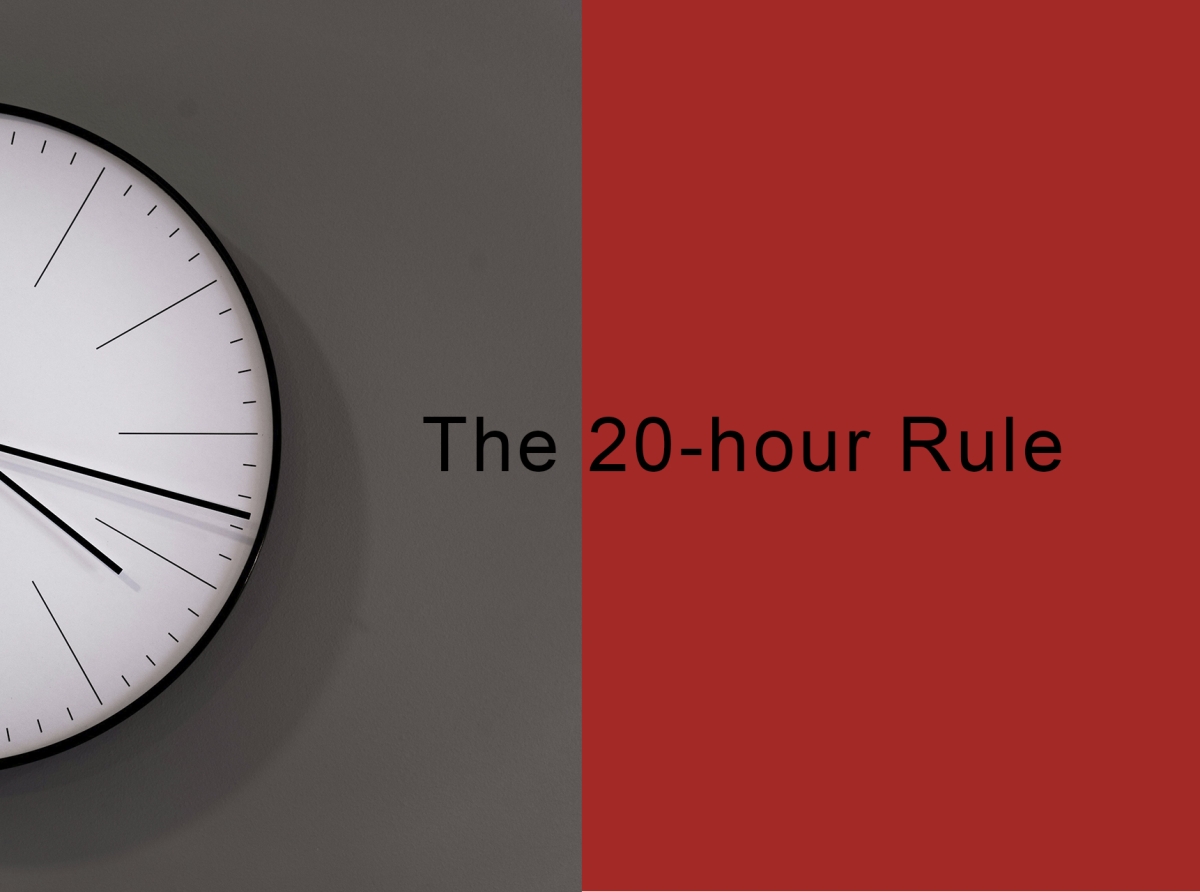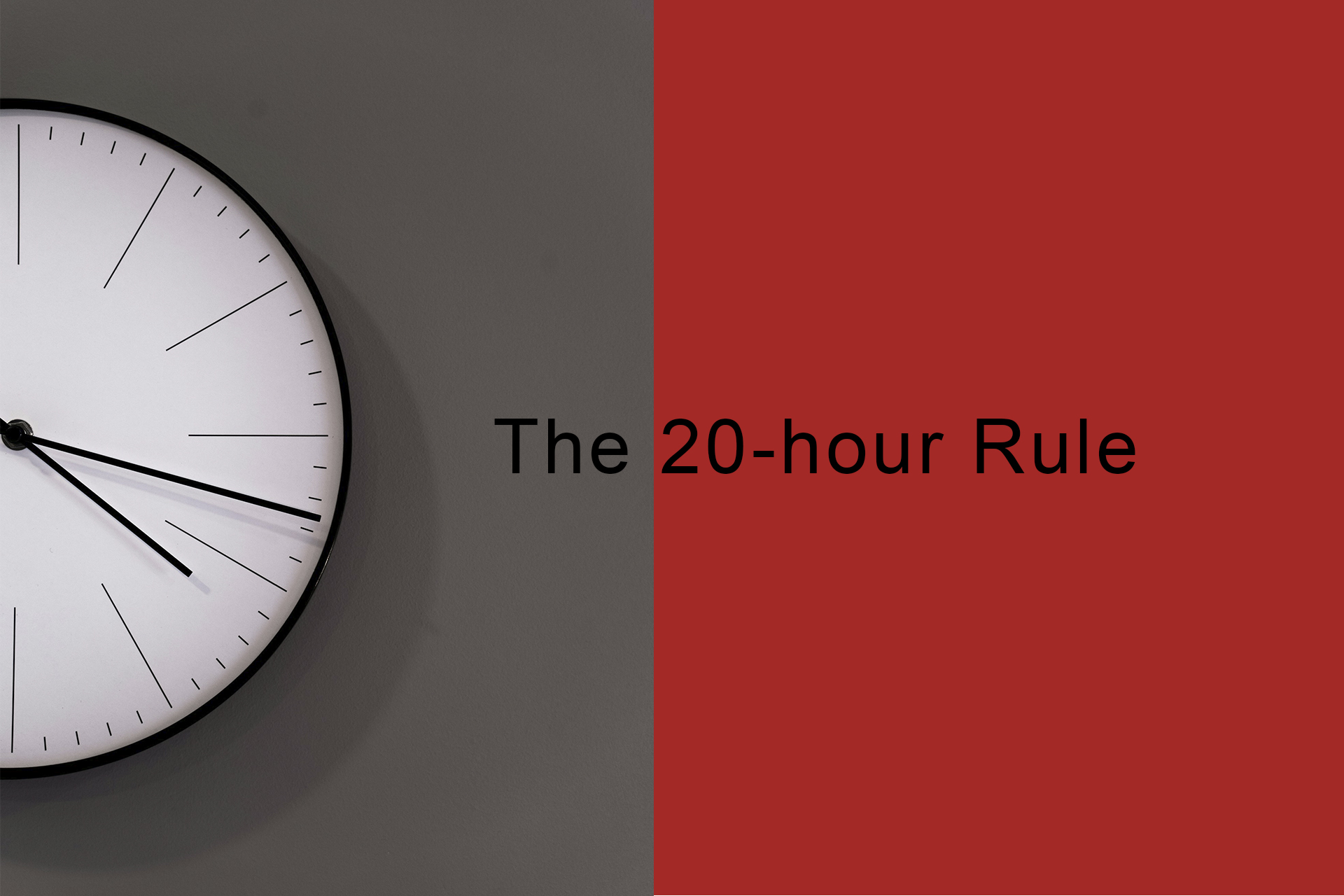First Step to Forex Knowledge: The 20-Hour Rule

First Step to Forex Knowledge: The 20-Hour Rule
In the fast-paced world of Forex trading, where currencies fluctuate by the second and markets respond swiftly to geopolitical events, acquiring knowledge efficiently is crucial.
The “20-hour rule,” a concept introduced by Josh Kaufman, suggests that with just 20 hours of deliberate practice, one can gain a foundational understanding of a new skill. This approach is especially relevant for aspiring Forex traders who face the daunting task of navigating complex financial markets.
Establishing a solid foundation in Forex trading not only minimizes risks but also sets the stage for future success.
The “20-hour rule,” a concept introduced by Josh Kaufman, suggests that with just 20 hours of deliberate practice, one can gain a foundational understanding of a new skill. This approach is especially relevant for aspiring Forex traders who face the daunting task of navigating complex financial markets.
Establishing a solid foundation in Forex trading not only minimizes risks but also sets the stage for future success.

First Step to Forex Knowledge: The 20-Hour Rule
Understanding the Basics of Forex Trading
Before applying the 20-hour rule, it’s essential to grasp what Forex trading entails. At its core, Forex (foreign exchange) trading involves buying and selling currency pairs with the aim of making a profit. It’s the largest financial market in the world, operating 24/5 and boasting trillions in daily volume.Beginners must familiarize themselves with fundamental concepts such as currency pairs (e.g., EUR/USD), bid and ask prices, spreads, leverage, and margins.
Understanding how major economic indicators like interest rates or employment figures influence currency prices is also vital. By mastering these basics, traders can make informed decisions rather than relying on guesswork.
Applying the 20-Hour Rule to Forex
The beauty of the 20-hour rule lies in its simplicity: by dedicating 20 focused hours to learning Forex trading, novices can accelerate their knowledge acquisition process. This commitment requires structured sessions wherein learners concentrate on specific aspects like reading charts or interpreting market news.Effective time management is critical during these sessions.
Breaking down learning objectives into manageable parts prevents overwhelm and promotes retention.
For instance, dedicating an hour to understanding candlestick patterns before moving on to technical indicators ensures comprehensive coverage without cognitive overload.
Tools and Resources for Effective Learning
To maximize those twenty hours, leveraging appropriate tools is paramount. Numerous educational materials.Additionally, simulations and practice accounts offered by brokers provide invaluable hands-on experience without financial risk exposure.
These virtual environments allow learners to test strategies under real market conditions while honing their skills practically.
In conclusion,
adopting Kaufman’s 20-hour rule offers aspiring Forex traders an actionable framework for building initial competence quickly yet effectively.
By understanding basic concepts through focused effort supplemented with quality resources—like courses or simulations—the daunting world becomes more approachable even within limited timeframes.
However beneficial this approach may be initially;
continuous learning remains indispensable given ever-evolving market dynamics influencing currency.
Forex trading, Learning strategies, Skill development, Currency markets, Financial education
adopting Kaufman’s 20-hour rule offers aspiring Forex traders an actionable framework for building initial competence quickly yet effectively.
By understanding basic concepts through focused effort supplemented with quality resources—like courses or simulations—the daunting world becomes more approachable even within limited timeframes.
However beneficial this approach may be initially;
continuous learning remains indispensable given ever-evolving market dynamics influencing currency.
Forex trading, Learning strategies, Skill development, Currency markets, Financial education









Report
My comments